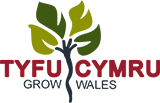
As we noted in the previous report on risk in food, microbiological contamination is one of the main 4 types of hazards.
In this report, we will look at some specific organisms of concern, where they come from, as well as talking about some of the potential controls you can put in place to minimise the risk.
We’ll start with the fact that microorganisms (and in particular bacteria) are all around us, on our skin and inside us. Most microorganisms don’t cause us any issues, however there are a few that do. These are called pathogens.
The main ones from a fresh produce point of view are bacteria such as E. coli, Salmonella species, Listeria monocytogenes, Shigella species, Clostridium species, and viruses such as Hepatitis A and Noroviruses. Fresh produce can also become contaminated with parasites such as Cryptosporidium.
So, what can we do?
In simple terms, we will not (nor should we try) to destroy all bacteria, viruses and parasites. However, we can reduce the risk of our fresh produce being the source of an issue through some relatively easy actions.
We can’t eliminate the risk of microorganisms contaminating fresh produce, particularly when they are grown in open fields. However, by implementing controls such as the ones identified in the downloadable report below, we can minimise the risk.
Download the toolkit: Microbiological Risk - What can we do?
